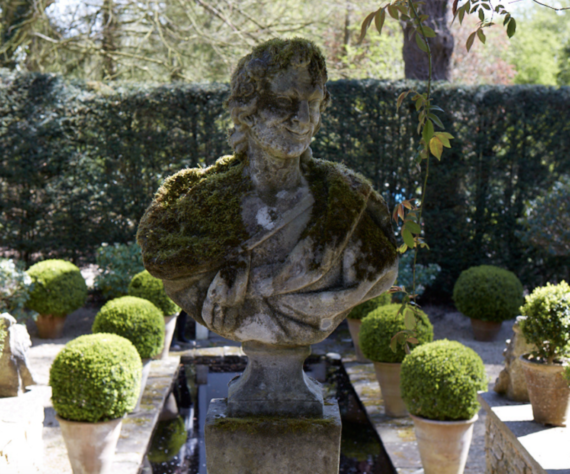You don’t need to inherit an ancestral estate to make antiques look at home in a garden. Beautiful vintage stone urns, columns, and planters—or even new ones masquerading as old—can be used in almost any space, including tiny courtyards and small cottage gardens.
The trick is to make antiquities feel as if they’ve always been there, even when a home isn’t historic. There are country house gardens where the urns and planters are often as old as the property they adorn and add gravitas, and elegance. And then there is the modern plot where such classic elements can add instant texture, attitude and pedigree.
Antiques dealer Will Fisher, the founder of London-based Jamb (who sold his vast collection at Christie’s in 2012, raising almost £4 million), knows how to use old accessories to fabulous effect. His own antiques-filled London garden featured recently in leading US blog, Gardenista, shares his best tips for how to incorporate antique pieces into any garden.
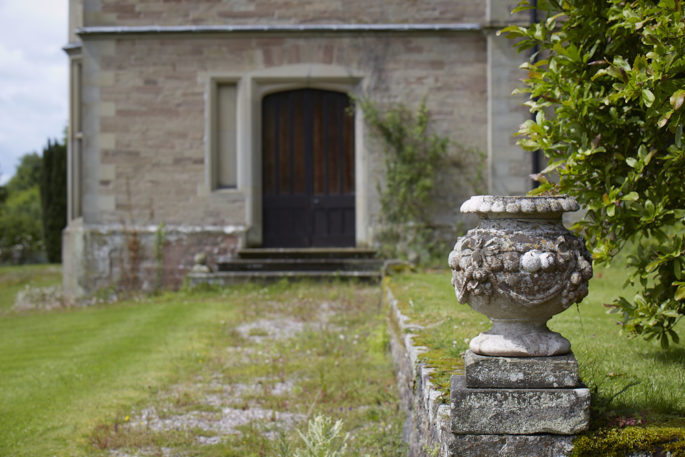
Photography by Britt Willoughby Dyer
PLAY WITH SCALE
It pays to be playful with pots, so don’t presume that a larger pot is too big for smaller spaces. “It’s fun to play with scale, creating contrast between the diminutive and overscaled,” says Will.
CREATE CLUSTERS
“I’m a big fan of the clustered pot. As with furniture, the key is to source ones with good color and surface,” he says. His favorite pots were made for Gertrude Jekyll by Compton (see, for example, a pair of Early 20th Century Compton Pots for sale for $8,890.52 on 1st Dibs), but he also collects 19th-century terracotta pots with good makers’ marks. If you are buying new, you can source pots with beautiful finishes such as elegant urns and planters from Anduze Poterie.
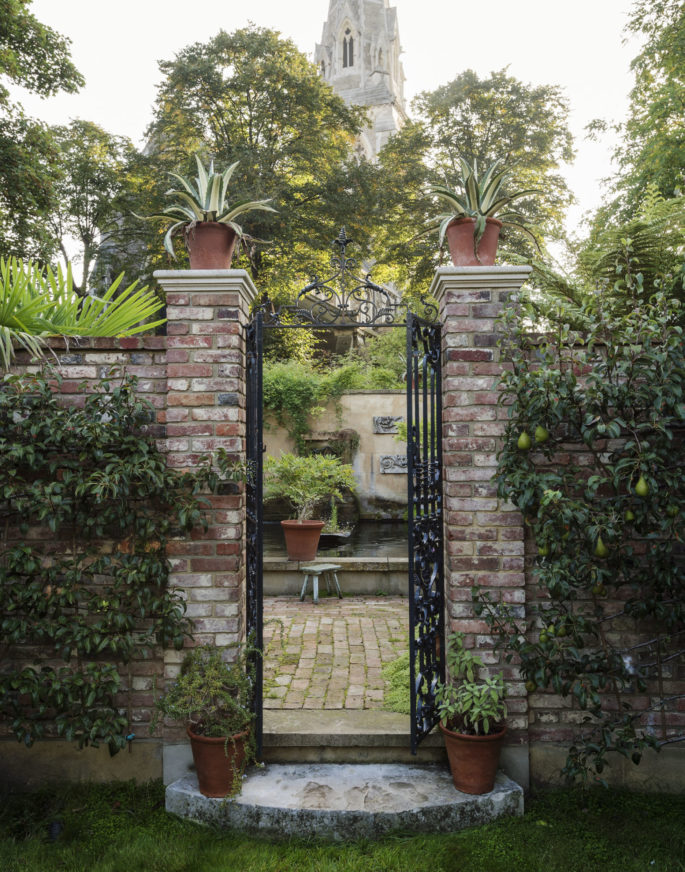
In Will Fisher’s garden, variations on a theme: a group of terracotta pots adds import to an entryway. Photograph by Matthew Williams.
MIX MATERIALS
Some materials mix better than others, but Will still advises trying to mix a few different types of finishes for the best effect: “The key is to keep a consistent palette throughout, using materials which age well and become muted and cohesive over time—such as Portland stone, terracotta, and lead.:
SPOTLIGHT THE SCENERY
Framing a view can be an especially effective technique if boughs of a tree arch gracefully around your chosen piece.
SOFTEN STONEWORK
Greenery can soften the edges if you are using newer pieces. This can be easier at ground level where some plants will very quickly surround pots, spheres, and urns. “I adore ‘Mind Your Own Business’ (Soleirolia soleirolii),” says Will. “It’s the most fabulous plant for softening stonework, looks wonderful amongst ferns, and has the most unexpected reflective quality— throwing the light in an enclosed space.”
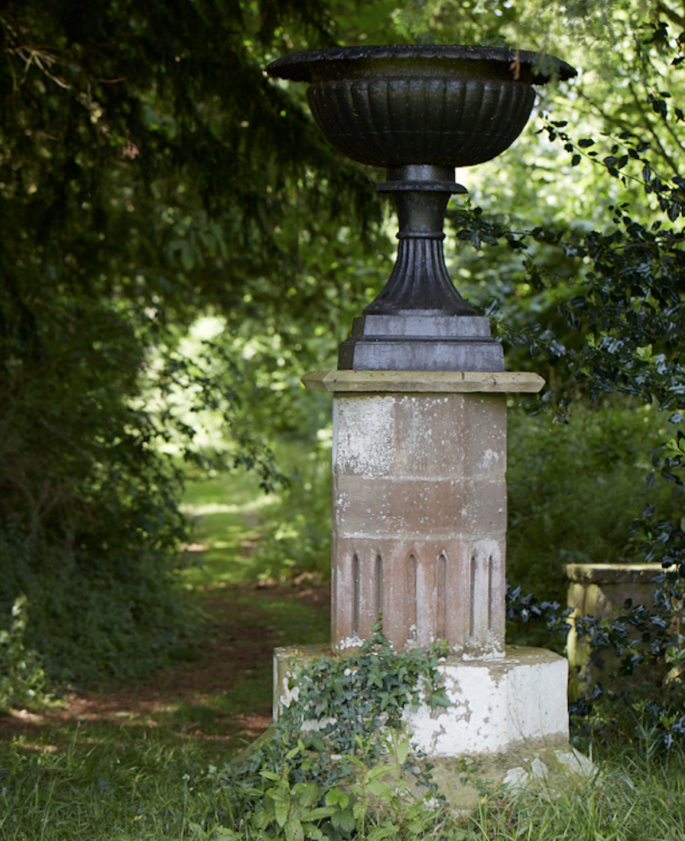
Ivy creeps up the base of a plinth to connect the architectural elements to the surrounding landscape. Photography by Britt Willoughby Dyer
BUILD BACKDROPS
Alternatively set large pieces into foliage, against hedges or climbers, to make them seem an intrinsic part of the garden.
STICK WITH A SUBDUED PALETTE
If you do want to use color, then stick with subdued shades in a limited palette. “I think it’s important to remain disciplined. Use color but in a considered manner, softening it with lots of greens.” Original story from www.remodelista.com
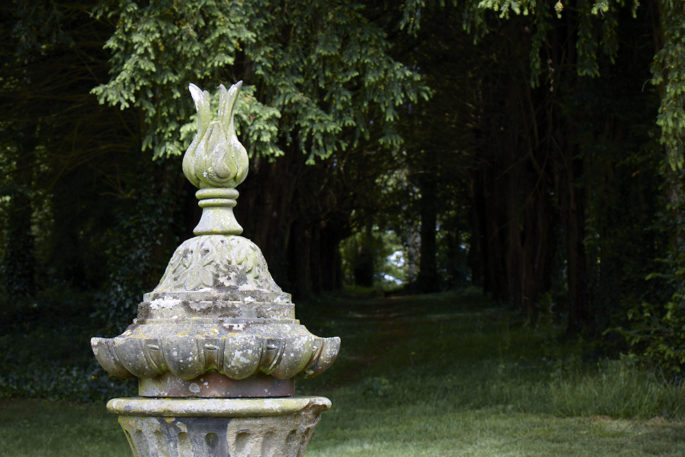
If you are using lots of antique pieces then an all green or monotone garden can work brilliantly—using lots of different texture instead of too much color works as a brilliant backdrop for stonework. Photography by Britt Willoughby Dyer
WAIT PATIENTLY FOR PATINA
But Will is not convinced by the applications (everything from yogurt to beer or buttermilk) that are thought to speed up the process of creating a patina. “This I think places a premium on authentic, old artifacts,” he adds. “I would always encourage the mixing of old and new and do so in my own garden. It’s interesting and important to observe the natural process of weathering as your garden matures.

What we all want of course is the fabulous patina of aged pieces including lichen and moss. Photography by Britt Willoughby Dyer

